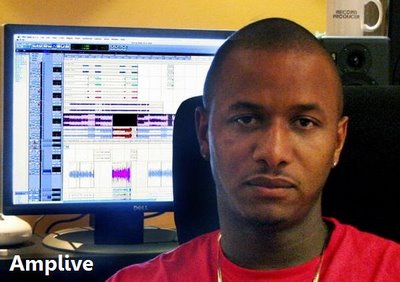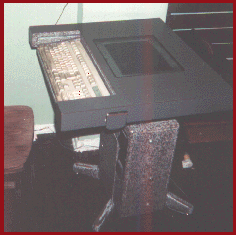Last week, a few of us attended the SanFran MusicTech Summit to worship learn from some of the innovative leaders in our rapidly evolving and still young(ish) industry. After nearly breaking off my big toe during a confused jog through Japantown, I limped into Hotel Kabuki armed and ready for note-taking, question-asking, and hand-shaking.
The group I found there was a rather predictable (yet lovable) mix of demographics including your standard socially awkward tech geeks (my favorite), the token I-was-born-for-networking (and my-Rolodex-is-bigger-than-yours) schmoozers, some badass rocker chicks turned marketing gurus, the young and fearless CEO/CTO/COO/founders of countless startups, the smartypants intellectual property attorneys (bless their souls – I’d rather be forced to listen to Mariah Carey* on repeat for a year while locked in a windowless room than be in their shoes), career musicians and producers, and a smattering of randoms. Each hour we had the choice of attending one of two panels or general schmoozing in the lobby.
* To be fair, I think she has an amazing voice, I just hate her music. A lot.
Halfway through one of the panels I noticed someone on their laptop twittering. Of course! I thought. Twitter! This is the perfect time to twitter. (Until then, I had only used the service a few times to say mundane things like “sore from working out” or “yay iPhones” or some such nonsense, and when you only have two people following you that seems pretty pointless). Suddenly it was starting to sink in how Twitter can be a very powerful tool. I quickly logged on and found the SFMusicTech live feed which, to my pleasant surprise, was filled with commentary ranging from concise updates about the panels (helpful for those not at the summit or just in the other room) to snarky comments about the speakers. It felt like a cross between real-time news coverage and anonymous chatroom blather.
When I twittered later in the day noting that most of the food on the snack table was yellow, someone promptly reiterated my observation and wondered if there was a hidden symbolism we were missing. Later one of the panelists messaged me directly and thanked me for quoting her earlier. That’s when I suddenly felt like part of some sort of cozy little invisible family. Want to join my twitter family? Follow me here.
Here are some highlights from the day:
- During the “Future of Radio” panel – major trends include personalization and recommendation (think Pandora and Last.fm) and mobility (internet radio integrated into your car stereo, tabletop devices, on your phone, in your stereo etc).
- During the “Creator’s Perspective on Technology” panel – Creeper Lagoon‘s Sharky Laguana talked about a cool service he created called MixPal. MixPal allows you to upload your music, choose the price, place a “MixLink” anywhere online (website, blog, MySpace, whatever) and you keep almost all the proceeds (they get 10% commission). Look at how their pricing compares to iTunes and Snocap. Since they’re non-exclusive you can use them in addition to any other service you use. MixPal is simple, straightforward and all about letting the musician decide.
- Also during “Creator’s Perspective…” – panel moderator and summit co-producer Shoshana Zisk commented that now in the music tech industry “People don’t have to learn the language to speak music”, which resonated with me because that is very much one of the things that MixMatchMusic is facilitating – allowing non-musicians and music fans to participate in the creative process too.
- During the “Social Networking and Music” panel – Ali Partovi, CEO of iLike, noted that they DO compete with MySpace Music. He recommended that artists keep a MySpace presence, but also use iLike because they will find far more fans on the latter.* Also interesting – apparently, people who use iLike purchase 250% more music online than people who don’t! I bet the ringtone companies love them… Toward the end of the panel, Ali asked with a note of exasperation in his voice why there isn’t just a “buy this” button anywhere and everywhere that you find music?? Excellent point. Anyone know if this is a realistic expectation in the future?
*Are you a musician who has a profile on both iLike and MySpace (and/or other sites)? I’d be curious to hear where you feel you’ve established a larger fan base. Leave a comment or email me.
- During the “Business Models That Work…and Those That Don’t” panel – moderator Andrew Stess, CEO of Music IP, mused that someone should build a choose-your-own-price service for concert tickets a la Radiohead. I so agree. In the meantime, Inticketing, one of the summit sponsors, has a great online ticketing system and event management solution (not to mention a green business) with clients like Burning Man, the Great American Music Hall (where our buddy Scott recently performed), Yoshi’s, and Victor Wooten.
After the panels ended, we were unleashed into the boozing and networking portion of the event, which also included a performance by singer-songwriter Samantha Murphy. Though I had to run off to my own weekly musical endeavor, in the hour or so I was there I met some interesting people. One musician/student I was chatting with about MMM emailed me later to say he was delighted to see that I had blogged about the Bubblegum Sequencer. Turns out he is one of the Berkeley students that made it! Small world.
Overall, I found the Summit to be helpful and inspiring. What struck me was how nobody really knows where the music industry (especially the online music industry) is going. Licensing, copyright, distribution…these areas are rapidly being dismantled and slowly rebuilt without any concrete blueprint. Or vague guideline for that matter. All I know is that I’m excited to be riding the wave that is technology and I can’t wait to see what kind of distant exotic shore it dumps us on.
Social media, which wikipedia says uses “the ‘wisdom of crowds’ to connect information in a collaborative manner” is redefining the way that we interact with technology, one another, and our environment. I think this is especially true for those of us who are building something online (a fan base, a website, a blog, a clientèle, an identity) or those of us who simply enjoy being a prosumer/producer/content creator/participant (via blogging, twittering, digging, social networking, posting YouTube videos etc) rather than just a consumer. Passivity is so…well, passè. But it’s not just a matter of getting involved. Once you’re involved, you have to participate. And regularly. Let’s face it – no one is going to read a blog that you update once a year.
Ariel Hyatt of Ariel Publicity put it best when she said: “New media is like an endless garden – you can’t just plant it and walk away”.






